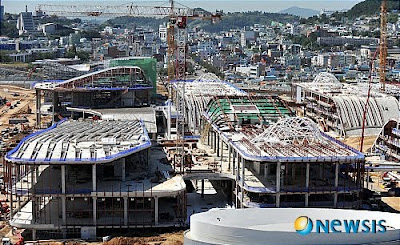I would be remiss not to mention the big news among foreign English teachers in Korea: that Seoul public schools plan to phase them out.
* Gusts of Popular Feeling has a lengthy post on these recent developments and their coverage in the local Korean-language press.
* The Korea Times and JoongAng Daily have some coverage in English.
* Roboseyo has a round-up of some comments among teachers on blogs.
* I'm No Picasso has a thoughtful reply to an idiotic interview with a 24-year-old Korean that repeats a lot of the same xenophobic bias we've been reading about for years.
Really, the writing has been on the wall for years: with the hiring of
Korean "lecturers" in practical English and the growth in
Teaching English in English [TEE] plans, the development of
the NEAT, the increased interest in
Indian and
robot teachers, the increase in online English classes and distance-learning, the non-renewal of public school contracts over the past few semesters, the attention to and focus on the "myth of the native speaker", and the wall-to-wall negative coverage in the local media. If anyone is surprised in 2011 it is only because there is a definite timeline for their phasing-out in place.
Unfortunately the NSET experiment in public schools was marred by poor implementation, disorganization, and disinterest, and it's no surprise that inefficiently-used native English speakers were ineffective and, well, inefficient in the classroom. Little thought went into how to use them, what the ultimate goals of their classes should be, or how to achieve those goals while working successfully with their Korean co-teachers. While papers and politicians can vomit countless anecdotes and articles about poorly-performing NSETs and "
unqualified" teachers, few column inches are devoted to who has done the hiring, the rationale behind those choices, and why the goals of English education in Korea are ultimately incompatible with the strengths of thousands of young, untrained, and inexperienced foreigners.
English class in Gangjin county's St. Joseph Girls' High School, 1970.
Native speaker English teachers have been in Korean classrooms for
decades, and there will presumably be places for them for years to come: young, inexperienced teachers will still find work in cram schools and English-immersion Villages, while those with experience and credentials may move to colleges, universities, teacher-training institutes like the British Council or the Jeollanam-do Educational Training Institute, or reputable hagwon.
Background reading:
*
Are native speakers part of English here? Your thoughts on the 2009 GETA conference.
*
A must read: account of teaching English in South Korea in the sixties. The .pdf file of a 1965
Korea Journal piece by Julian le Patourel, which details many of the same challenges NSETs continue to face 40+ years later, is available
here.



















































